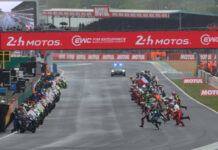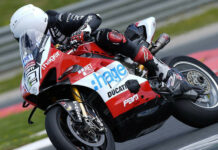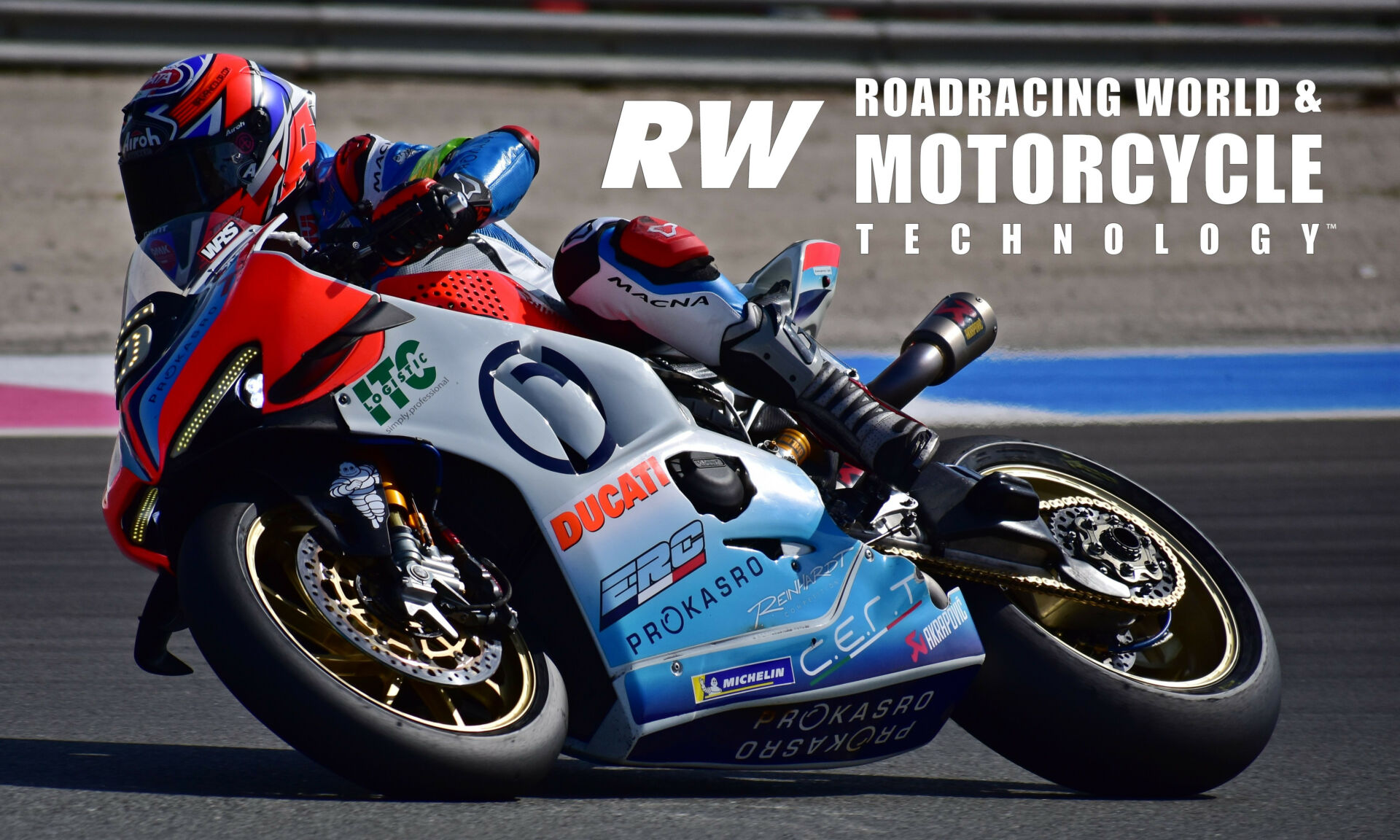Copyright 2022, Roadracing World Publishing, Inc.
By Michael Gougis
There was no way ProKASRO Team ERC Endurance was giving up without a fight.
For the 2018-2019 season, the team had raced BMW S 1000 RR racebikes in the Endurance World Championship as the official representative of the German company. But for the next season, BMW was bringing its team in-house and up to full factory status, racing the new M 1000 RR. And ERC was not going to be involved.
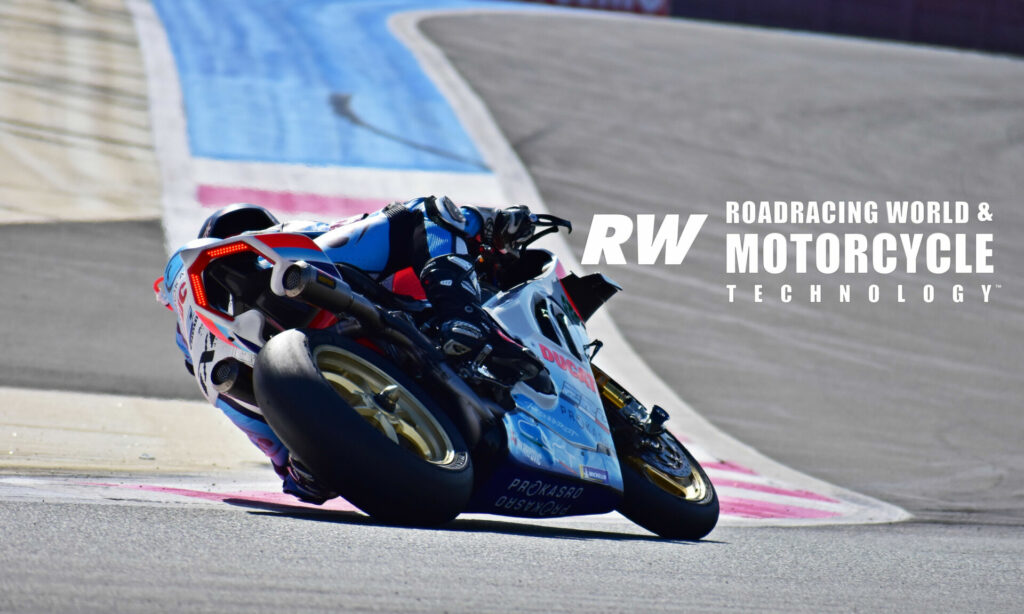
Instead of stepping back and running as a satellite BMW operation, as it did for the first race of the 2019-2020 season, Team ERC went looking for a factory partner, and found one in perhaps the most unexpected of places. Ducati, already winning in MotoGP, World Superbike and elsewhere, opened the doors to its race shop and invited Team ERC in.
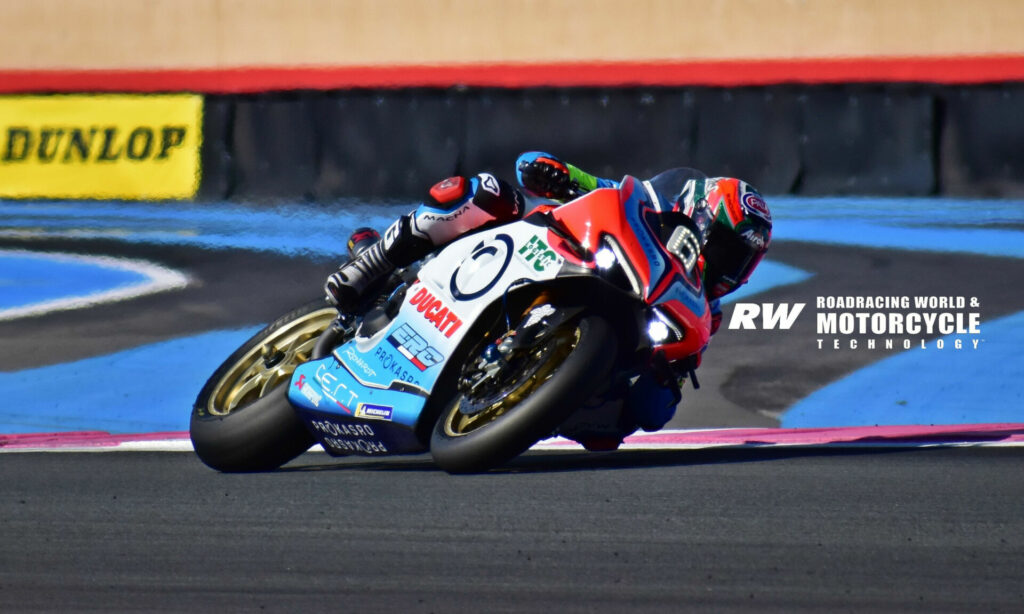
For the second race, a monsoon-battered 8-hour event in Sepang, a factory-backed Panigale V4 R was on the grid, a full-blooded racebike built to World Superbike specs at Ducati Corse and modified to survive the rigors of EWC competition.
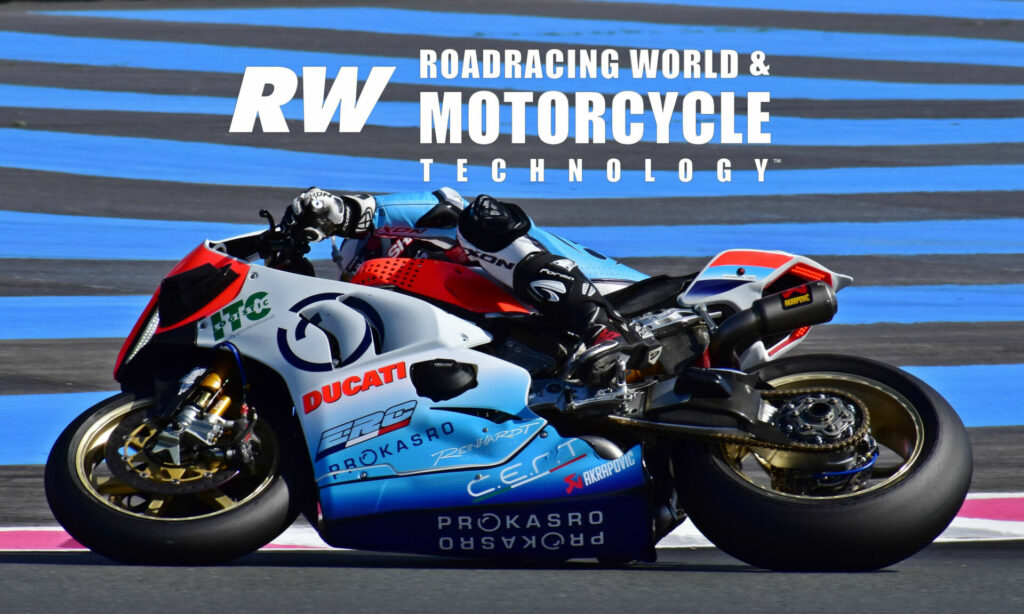
The ERC Endurance machine is one of the most unique motorcycles to come out of the race shop at Borgo Panigale. It is sprinkled with custom, one-off and street machine pieces, assembled with the assistance of factory race mechanics, fettled at the track by a factory electronics engineer with control strategies from MotoGP and World Superbike and tires with MotoGP technology.
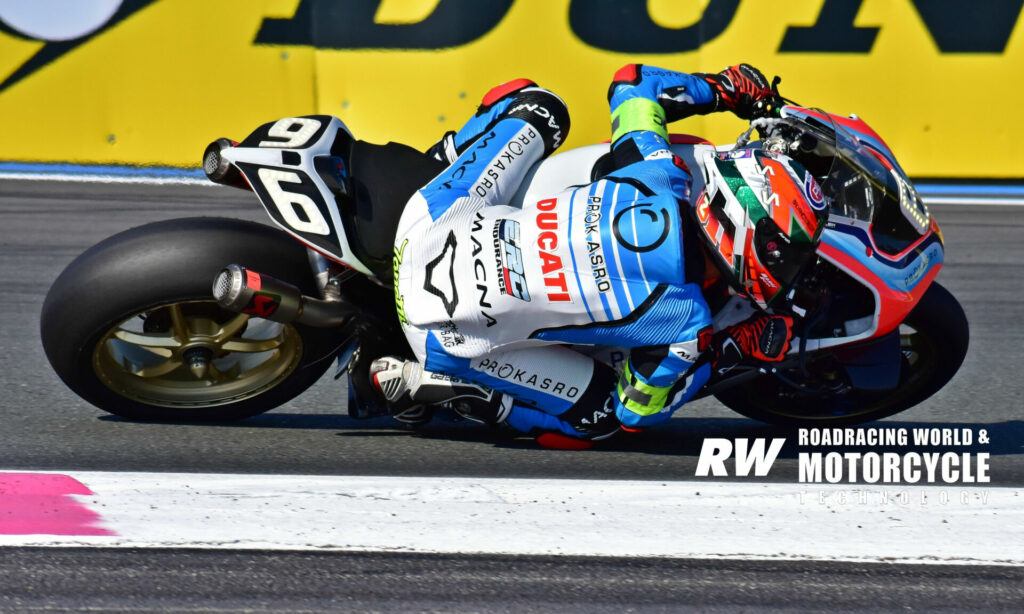
*****
Ducati does things Ducati’s way.
Unlike some manufacturers which will sell turn-key International-spec racebikes built either in their racing departments or by their official racing partners to anyone with the cash (BMW, Aprilia), teams have to prove to Ducati that they have the ability to properly operate one of its racebikes before you can buy one. Ducati North America representative Alex Frantz outlined the process in broad strokes as it happens in the U.S.
“Ducati Corse…only work with bona-fide professional Superbike teams,” Frantz says. “Race teams first go through a due-diligence process with Ducati North America to assess the team structure and technical capabilities. Once the team is approved by our CEO, Ducati North America will make a request with Ducati Corse to begin discussions with the team.
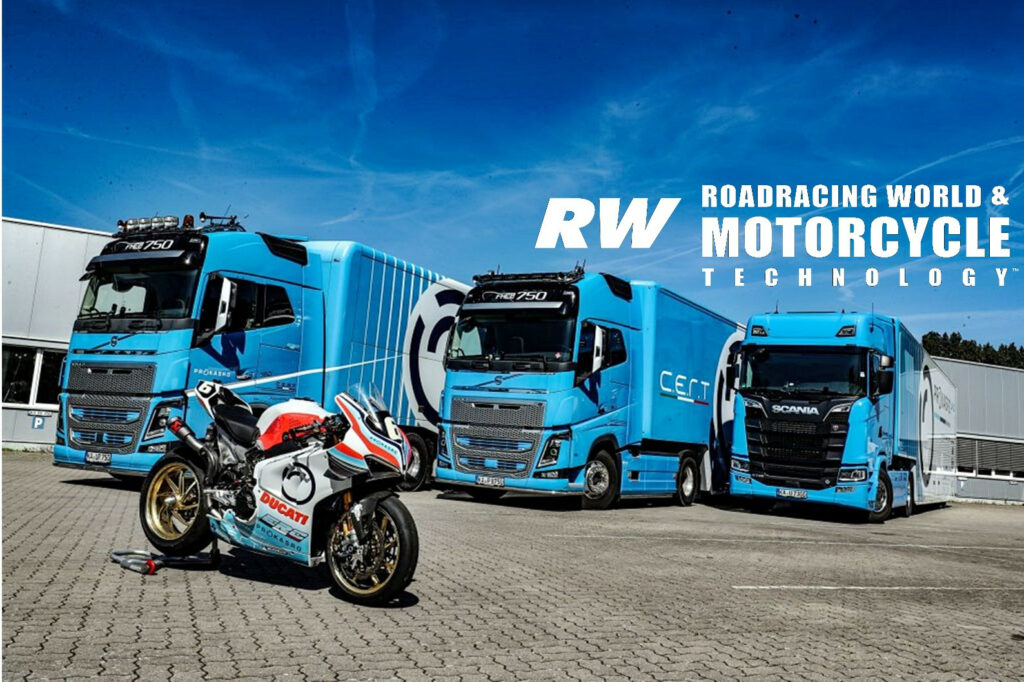
“Each bike is hand-built in Bologna by Ducati Corse specifically to the technical regulations of the particular National Superbike Championship. Each championship applies different elements of FIM SBK regulations for engine specs, electronics. In addition to the bikes, teams can contract Ducati Corse technicians or Magneti Marelli data engineers to help the teams to deliver the maximum potential of the bike.”
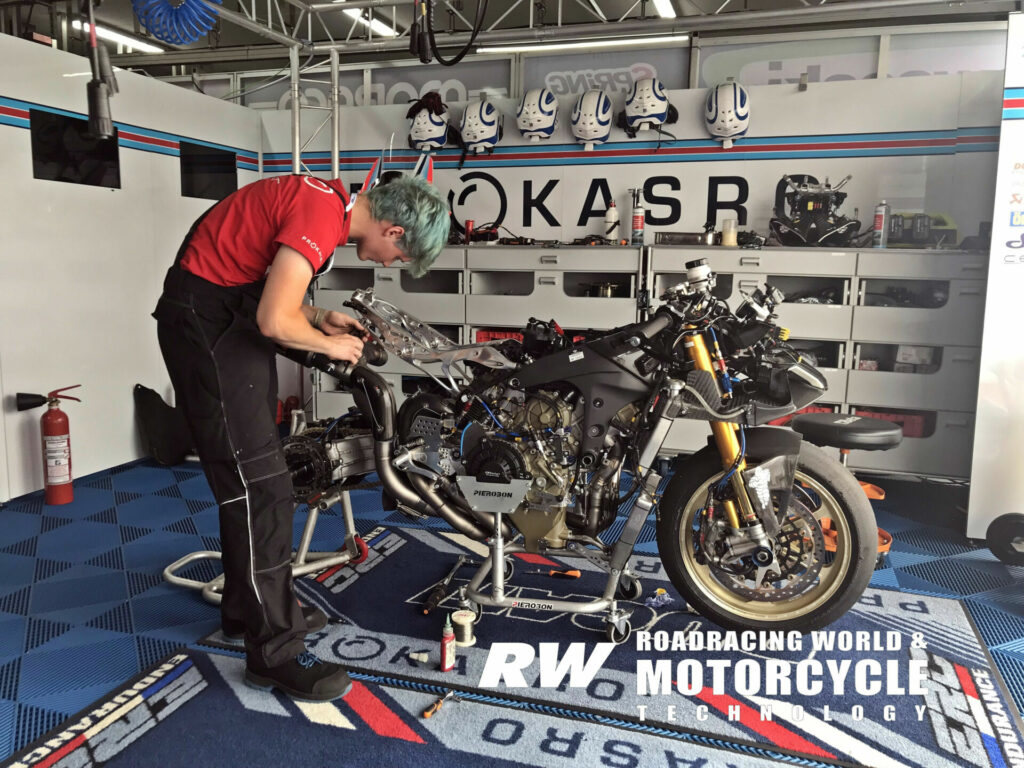
It makes sense–little good can come to a company’s reputation by selling a racebike to a team that can’t run it. ProKASRO ERC’s reputation and experience in racing EWC didn’t hurt when it went knocking on doors in Bologna. The company, internationally known for its robotic sewer maintenance equipment, also has years of experience in top-level competition. U.S. fans may be familiar with the ProKASRO name; the company has an office in Colorado, and that led to an assault on Pike’s Peak in 2019 with Lucy Glöckner. It also likely didn’t hurt that ProKASRO Managing Director and ERC Team Manager Uwe Reinhardt is a Ducati aficionado with a personal collection of some of the company’s most desirable machines, although Reinhardt says he wasn’t thinking about that when the team approached Ducati.
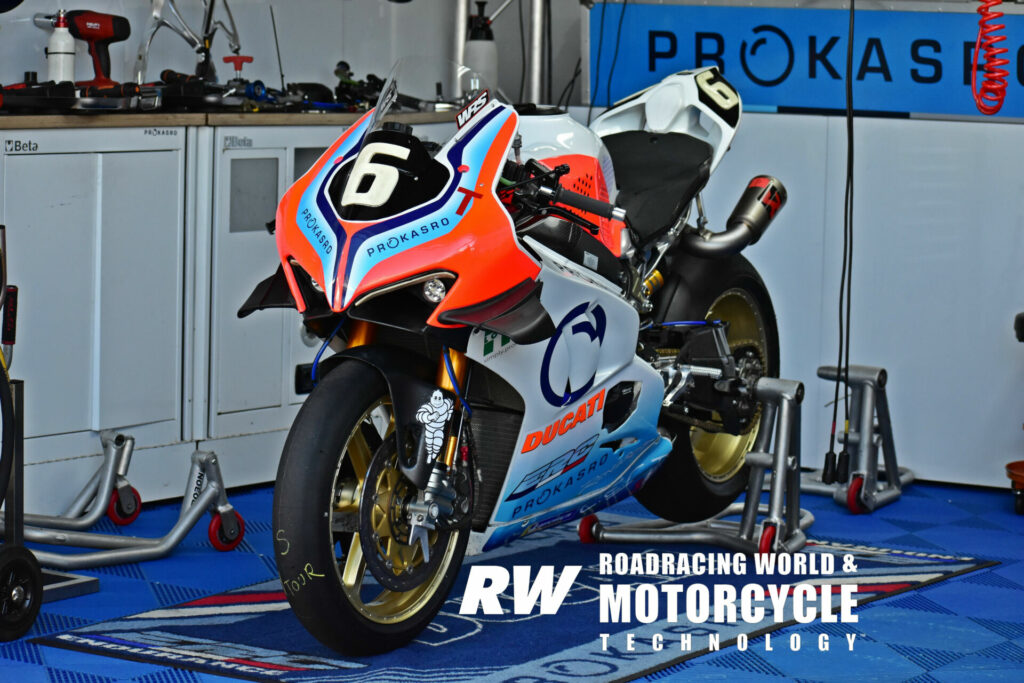
“My passion for the brand and my personal collection of Ducati bikes had little to do with the decision to start up a partnership with Ducati. What really counted was the fast, efficient and substantial commitment they immediately put in place and the support they will be providing throughout the season,” Reinhardt said when the collaboration was announced.
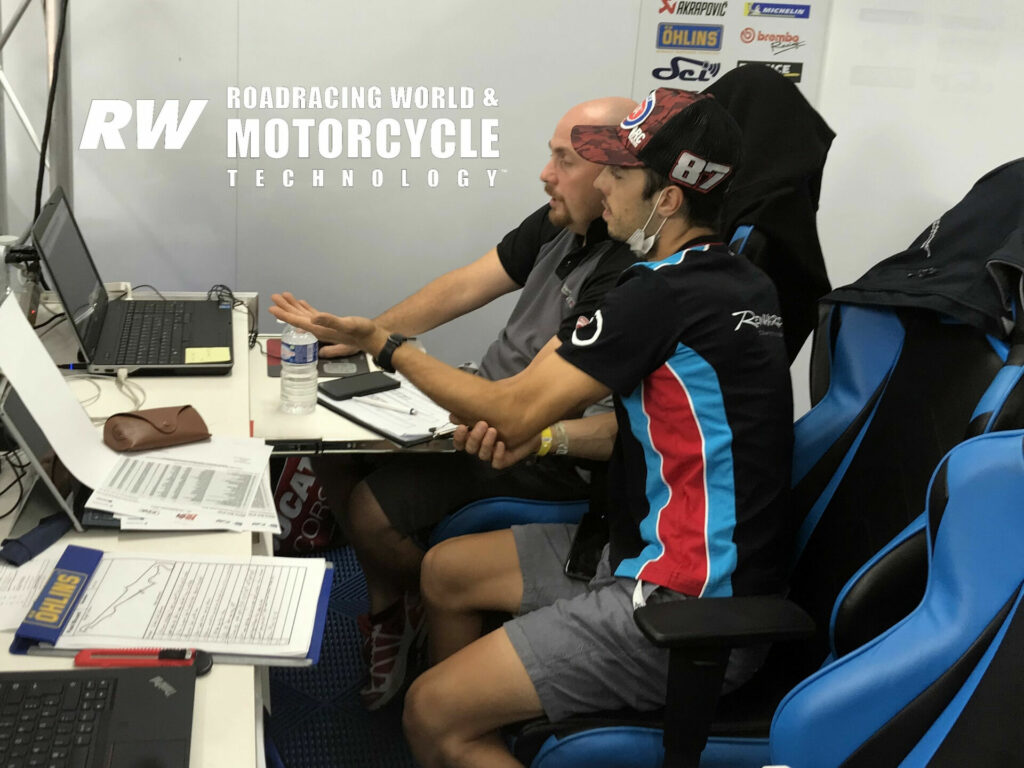
What really boggles the mind is pondering why Ducati said yes when ERC came calling. At the time, the company was competing in several National-level Superbike Championships, winning the British Superbike title with Scott Redding. It was involved in a tooth-and-nail fight with Kawasaki in the Superbike World Championship and was fighting with Honda for the MotoGP World Championship. As mentioned, each series has its own technical requirements and challenges–and there are only about 100 people working at Ducati Corse. It’s not like the racing department didn’t already have its hands full!
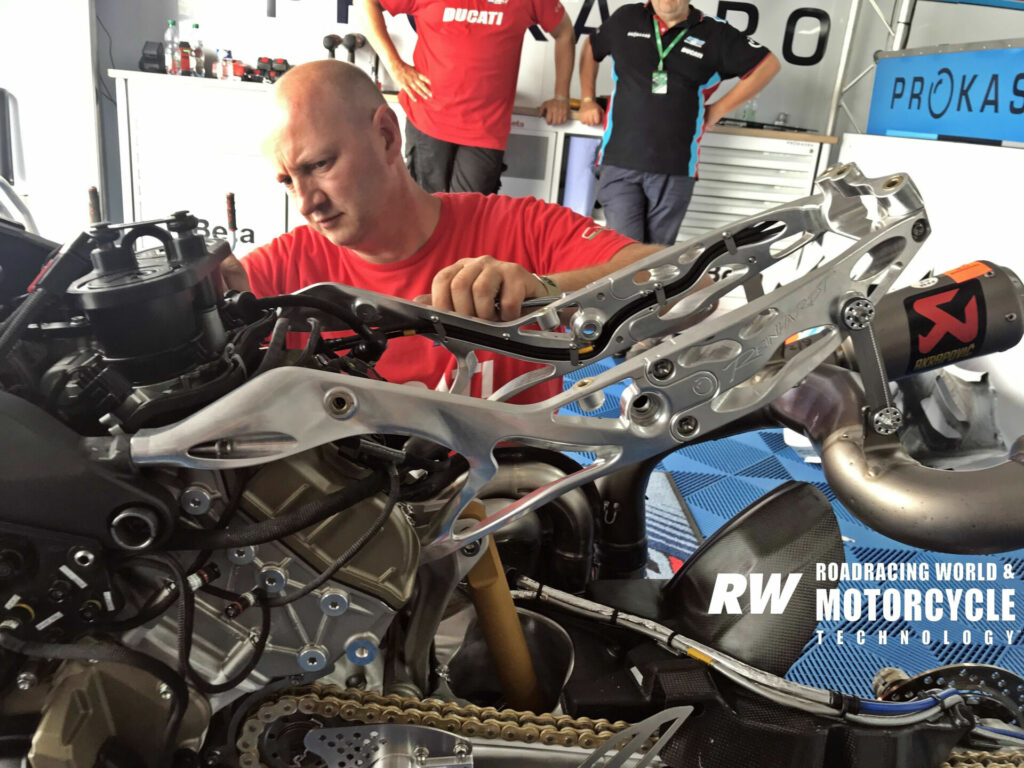
But Sporting Director Paolo Ciabatti said the company saw the new program as an opportunity. “When ERC Endurance approached us regarding a joint EWC effort, we thought that it was a good opportunity for Ducati to show the quality, reliability, and competitiveness of the Panigale V4 R also in that championship. In addition, endurance racing helps our engineers to get valuable data and information from such long-distance races,” Ciabatti told Roadracing World.
And thus the factory Team ERC Ducati Panigale V4 R was conceived.
*****
Instead of taking a production machine and building performance into it, Ducati and ERC started with a sprinter and built endurance into it. It’s no small challenge. The Superbike World Championship bikes are built to compete in races no longer than 68.75 miles. The winning machine at the 2021 Bol d’Or covered 2,525 miles in 24 hours.
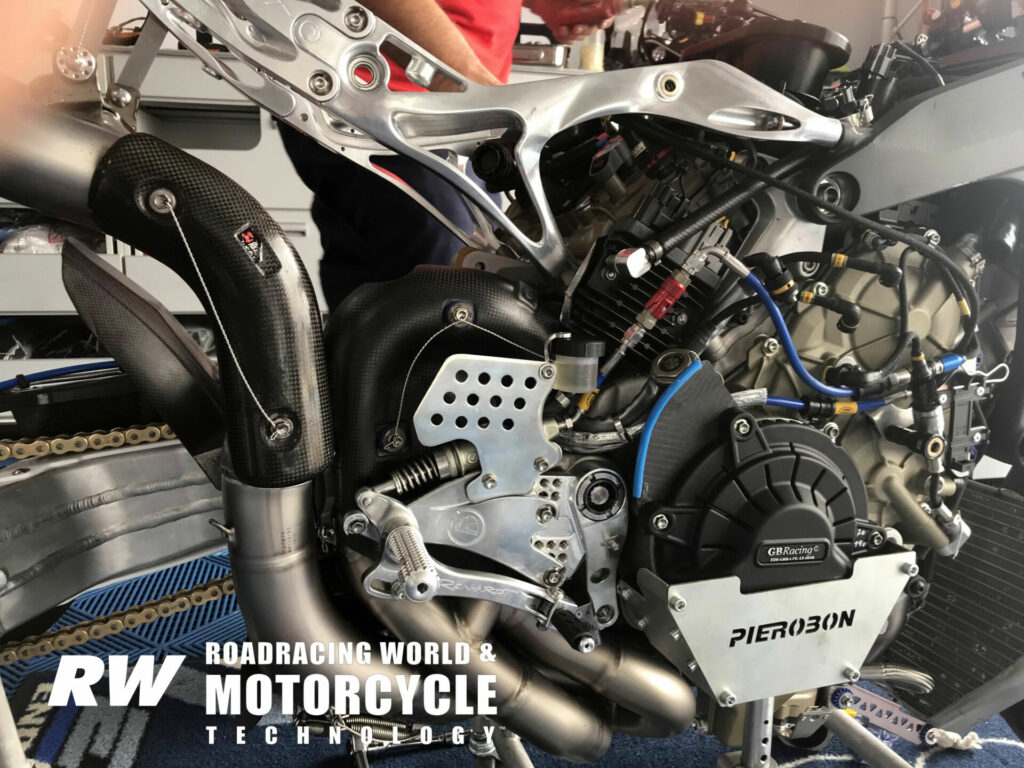
The process starts with ERC technicians heading to the race shop to work alongside Ducati race technicians to assemble the machines. The starting point is the Panigale V4 R World Superbike machine, a race-only version of the V4 R streetbike that is available to the public. Compared to the standard 1,103cc streetbike, the V4 R streetbike gets a lighter, 70-degree offset forged steel crankshaft that shortens the stroke to 48.4mm, reducing the displacement to a WorldSBK-legal 998cc. Lighter titanium connecting rods and intake valves are fitted. The engine breathes through 4mm larger, 56mm throttle bodies.
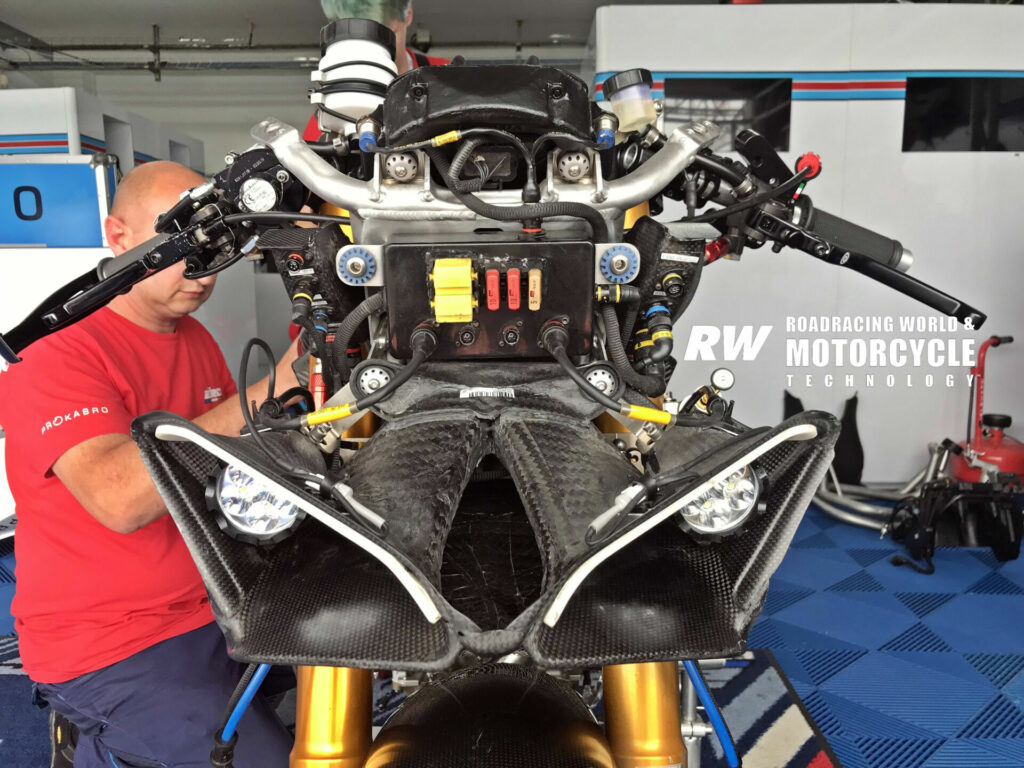
Understanding the street base configuration is critical because, to get the Stradale R engine to survive a 24-hour race, some of those street-going components are dropped into a World Superbike-spec engine. The racebike gets the pistons and camshafts from the street V4 R. This increases the machine’s durability for endurance-length events, says Lothar Kraus, the ERC engine and suspension technician who showed Roadracing World the racebike in detail as it was being prepped for the Bol d’Or. The rocker arm helper springs are different and the transmission is unique, a WorldSBK unit modified to put neutral between first and second gears, instead of below first as on the WorldSBK machines. The machine exhales via a special full race Akrapovic titanium exhaust that quiets the exhaust volume to EWC-legal levels.
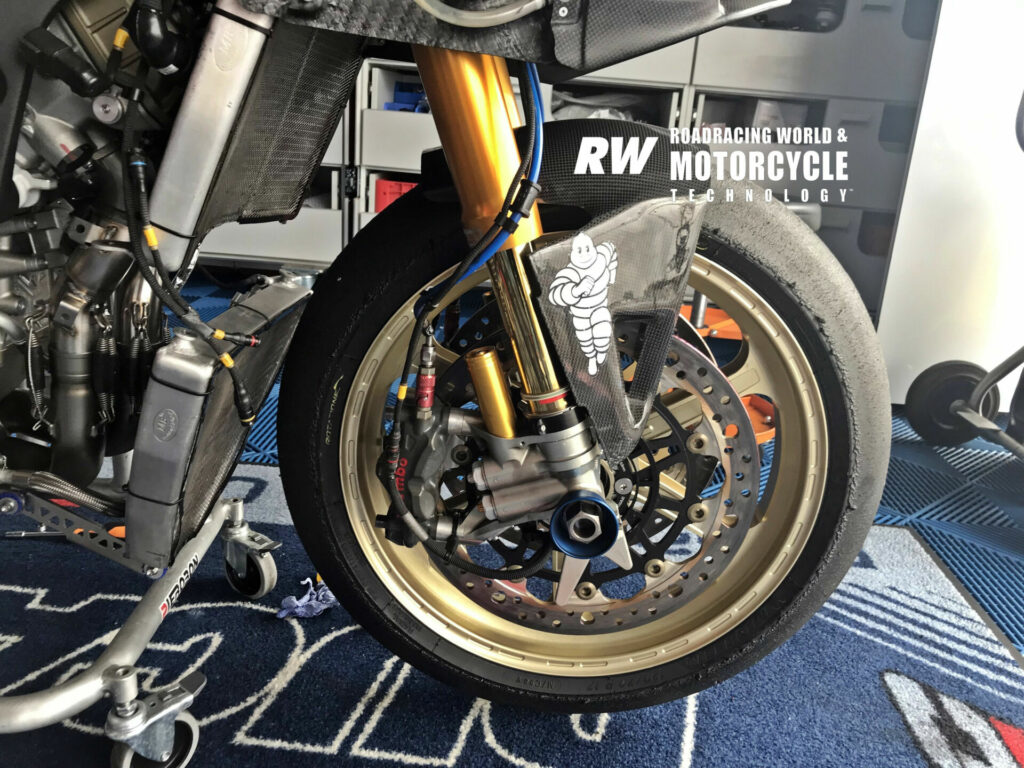
The Panigale V4 R racebikes run modified front “frame” sections–the Panigale’s chassis consists only of a short subframe mounted to the front of the engine that holds the steering head and, in the rear, the subframe. The racing front subframe has altered stiffness to get the flex that Ducati is looking for. This has created its own difficulties for the endurance team, Kraus says. The Ohlins 46mm pressurized RVP2530 upside-down forks found on the Superbike are simply not crash-worthy enough for EWC competition, where accidents are part of the game and riders and machines are expected to get up and carry on. The Ohlins FGR300 fork that replaces it is stiffer, but that compromises the carefully balanced flex characteristics of the chassis. Still, it is a compromise that makes sense in the context of endurance racing, Kraus says. An Öhlins WorldSBK-spec RSP40 shock is mated to a single-sided factory Superbike swingarm via a factory linkage.
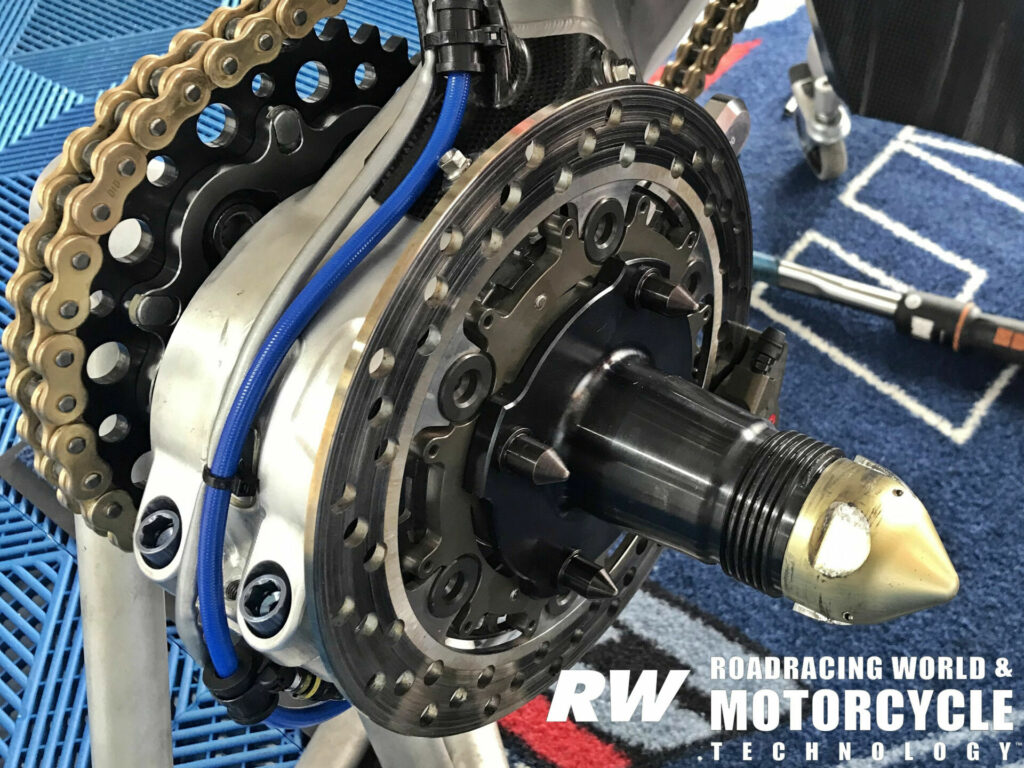
Electronics are pure WorldSBK–a Magneti Marelli MLE ECU. As part of its commitment to the project, electronics engineer Fabio Pasqualini handles data management duties. He’s experienced with the Panigale V4 R, having served as data engineer to Ducati Superbike factory rider Michael Ruben Rinaldi when Rinaldi won races for the satellite GoEleven squad. “Without the technician, the bike does not run,” Kraus deadpans.
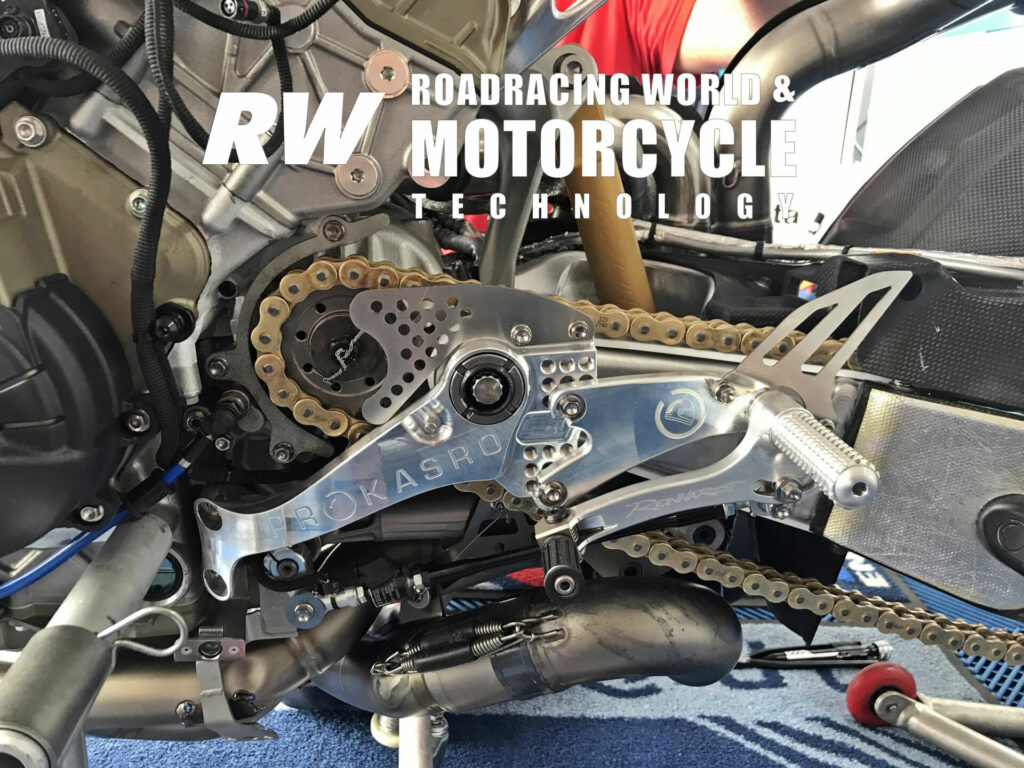
The Tuesday prior to the Bol d’Or was a lengthy test session, and Pasqualini spent the day gathering data on all the available tire choices, as well as data and feedback from all three riders. He spent the next two days building maps for traction control, engine braking and power settings, maps that served as a compromise for all three riders and for the wide range of temperatures expected.
Compared to the WorldSBK engine control maps, Pasqualini says, the endurance Panigale has less engine braking and more traction control. The riders don’t always like it, because more engine braking and less TC would produce a slightly quicker lap time, he says. But the endurance settings mean quicker lap times at the end of a stint, because the rear tire is less worn, and the rider is fresher as well.
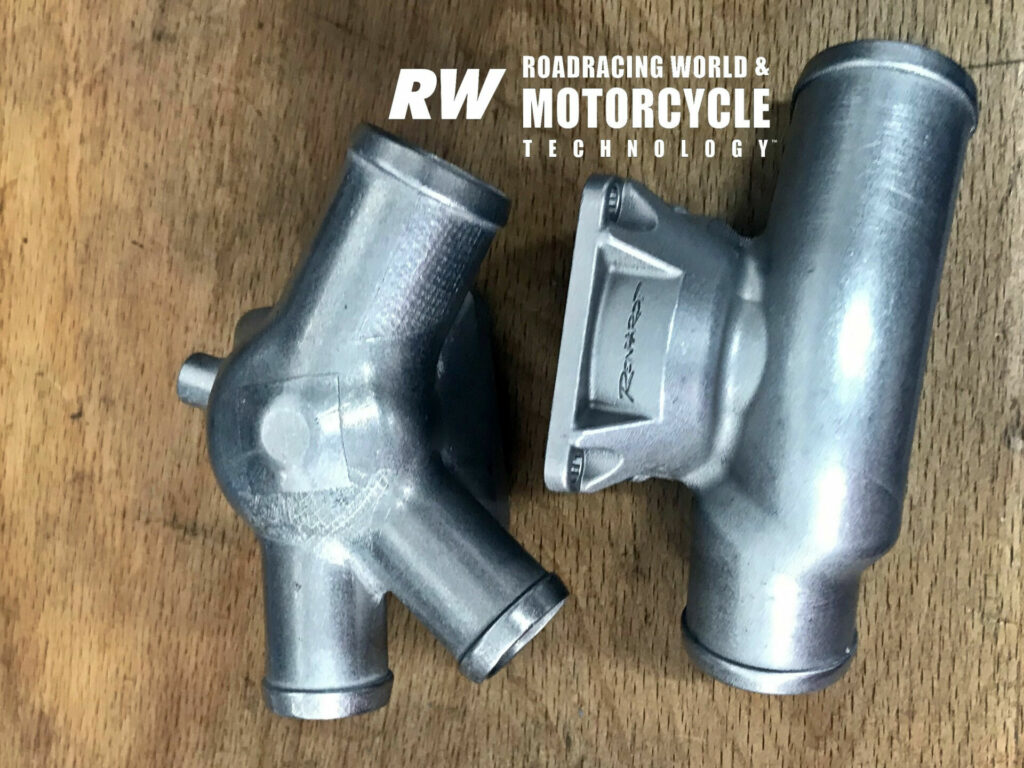
A custom subframe, rearsets and triple trees made by ProKASRO complete the chassis. Brembo endurance racing calipers handle braking in the front. The team assembles its own handlebar switchgear, and contracted with a neighboring company in its home town of Karlsruhe to create a lighting system–obviously, purpose-built WorldSBK-spec machines don’t come with lights.
Little things: A trick custom rear wheel axle, borrowing tech from Formula One, speeds rear wheel changes. The team had to create a better temperature management system, because while a Superbike team can carefully prepare the bike for the temperature at race time, an endurance bike must operate in the heat of the day and the chill of the early morning hours. ProKASRO 3D-printed special thermostat components. A hydraulic adjuster plumbed into the rear shock allows the team to switch to its wet-weather suspension preload setting in a fraction of a second.
As if there wasn’t enough to sort out, ERC runs Michelin tires. This keeps Pasqualini busy, as he adapts the electronics strategies built around the Pirelli spec tires in WorldSBK to the Michelin tires. Michelin uses the team to evaluate MotoGP tire technology, and is so protective of its rain tire technology that the team must send them back to Michelin’s truck at the end of every day’s racing activities.
So far, the team’s best finish is sixth place. It is still learning its way with the new machine, with only seven races with the Panigale so far. But at the Bol, before brake failure at the end of the Mistral straight led to a machine-destroying crash, ERC was in a solid third at the 10-hour mark. Teething problems aside, the bike has proven it has the performance to run at the front in some of the most challenging races in the world.




